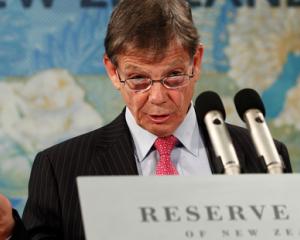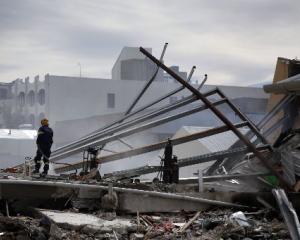That would take the OCR from 3% to 2.5%, where it was from April 2009 to June last year.
ASB economist Jane Turner said the personal, economic and financial ramifications for the entire economy from the earthquake appeared increasingly severe as more information came to hand.
"At a time of national crisis, when the underlying economy is already proving frustratingly weak, a rate cut would potentially be very helpful to the recovery of the economy."
Reserve Bank governor Alan Bollard had proved to be pragmatic when faced with a large degree of uncertainty, she said.
Canterbury residents faced a massive challenge in restoring their region following last month's earthquake.
The damage to infrastructure had been greater than the September 4 earthquake and the central business district might be out of action for many months.
Tourism would be severely affected at a key time of the year for the industry, Ms Turner said.
"A large degree of uncertainty remains, including the extent of the damage and the financial cost to the Government. We can conclude that this earthquake will take a large toll on both Canterbury and the wider national economy."
The financial cost would be much higher than the September earthquake, but insurance would cover much of it.
However, there would still need to be a large diversion of private and public funds and resources to the Canterbury region.
New Zealand households and businesses would face higher insurance premiums and fiscal policy risked being tighter for the wider economy, she said.
"The cost to the Government is likely to be large at a time when the economic back-drop is posing challenges to the Government in reducing fiscal deficits."
The Government would need to give priority to rebuilding Christchurch and that was likely to come at the expense of government investment or spending in other areas.
Economic growth was likely to be much weaker this year than previously thought, largely as the rebuilding recovery initially scheduled for Christchurch was likely to be pushed back.
The clean-up job in the CBD was massive, as were the number of claims assessments that needed to be done, Ms Turner said. The process for rebuilding damaged commercial property was likely to take a long time.
It could be a decade before the CBD was back to a "pristine condition".
The earthquake would be inflationary, she said. Damaged and unusable buildings would take time to replace and that would put upward pressure on rents. With some Cantabrians opting to leave, that might not be restricted to Christchurch.
As the rebuilding process began, limited capacity would put upward pressure on construction costs.
The Reserve Bank's policy targets agreement with the Government allowed it to look through first-round inflation impacts that resulted from a natural disaster.
"Regardless, it is too early for the Reserve Bank to be concerned about spill-over inflation pressures stemming from future construction activity."
The reconstruction process was unlikely to reach full gear until 2012, by which time the central bank could easily remove the additional stimulus it needed, Ms Turner said.
Importantly, the Reserve Bank still had breathing space on inflation.
Economists had been calling for rate cuts of various sizes and wholesale interest rates had fallen sharply, reflecting the expectation of a cut.
The four big banks had dropped fixed mortgage rates substantially, indirectly adding more pressure on the Reserve Bank.
"It would be a hard message to sell if the Reserve Bank took back 0.5% of mortgage relief in light of the economic outlook."
The earthquake will cost up to $15 billion and set gross domestic product growth back by 1.5 percentage points, Treasury has said in its monthly economic indicators for February.
The silver living would be a sizeable boost to residential, commercial and infrastructure investment from 2012.






